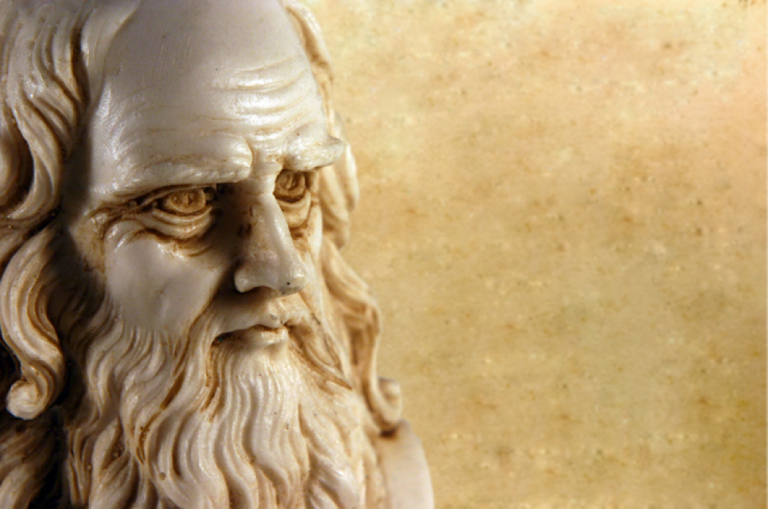The "science" that creates Leonardo generally disappointed the philosophers who, as it stands, are keen on the systematisation of the observations. It has impressed only those thinkers who have admired the ability of Vinci to methodically adopt phenomena and to highlight their essential characteristics. There is no doubt that Leonardo's intellectual activity is consistent with the principles of aristotelism, which stems from the gradual penetration of individual objects, while Platonicism is oriented towards the original / primordial unity. Nevertheless, the dedication of an exceptional value to mathematics, an absolute paradigm of the right knowledge, and the emphasis on "infinite ragioni che non sono in esperienza", counterbalance radical empiricism, to which, Leonardo firmly sticks. This position should be perceived by the state based on a complete approach that many commentators do not bother to recover. Leonardo aims to build a science for the "visible" and does not hesitate to subordinate the conclusions of philosophy or science to the physical world of the privileged role of painting, necessarily related to observation, as "the eye is not so often deceived" ). In fact, the paradox is only apparent: Leonardo does not deny the relative accuracy of the senses, in this case it is not the eye of the ordinary man, but the eye of the scientist. The activity to be represented, ie. painting is inextricably linked to the scientific study of nature and helps to realize it at the moment when it provides some methodical approach. The axiom that Leonardo repeatedly echoes in the introduction of the "Treatise on Painting" is actually the identity of painting and philosophy, of art and science.
Not forgetting this axiom, we can actually establish the inner link between Leonardo's approaches if we avoid the uncritical glorification of miraculous discoveries of genius. Any scientist who has discovered, or thinks, that he has discovered notice of significant discoveries in Leonardo's writings that became available after 1882, plainly proclaims him incredulous as the forerunner of all scientific discoveries. Thus the French scientist Pejladan declared him the predecessor of Copernicus because he had discovered gravity, Kepler - had watched the glare of the stars, Matzlin - had noticed the reflection of the sun, Halley - had discovered the passages (winds) of Galileo - he had studied the movement and so on. It is true that a number of Leonardo's remarks have been overtaken by some discoveries of modern science, but they have not been formulated or summarized in the established way. So it is more important today to outline the general framework in which its research is based.
The general concept of nature is built using two inherited theories: the ancient theory of natural elements and the theory of analogy between the human microcosm and the universal cosmos through which the two concepts are associated. The ancients have called the human microcosm, and the formula is very appropriate, since man is composed of earth, water, air and fire, and the composition of the Earth is analogous. In Nature there is a huge circle of ocean water that is comparable to the spread of blood from the heart of man. As far as the maturation of metals is concerned, it is claimed that nature can be likened to a gigantic living being. Here are the beginnings of Paracelsus's "vital force" theory. But Leonardo does not rely on intuition: In order to find out the reason for the sprawling motions: wind, water, falling bodies, and so on. he deals with the methodical analysis of the movement and its laws and so it actually goes the way Galileo goes later but fails to reach the abstract physical laws of space. According to him, each movement is due to the fact that each of the four elements is in a state of rest in its sphere, and the variety of phenomena derives from the confusion and the conflicts that arise from their moving and mixing at different levels. The question is to measure the forces in force. The most detailed, and perhaps the most original, idea is that gravity, which, for example, attracts or creates the impression of attracting bodies to the center of the Earth, is not due to any force of attraction (called by Leonardo Desiderio /), and depends on the percentage of one or other element. Gravity, like all other movements, is due to an initial displacement, violence or impetus: every action of this kind is called accidental. The description of the physical world thus acquires the character of true drama, whose tension Leonardo does not seek to alleviate through the vocabulary it uses.

Great information
@godflesh Leonardo was the first to explain why the sky is blue. One of the most creative person of our history.
Nice article ,friend you are always coming with unique concepts and different kind of ideas ,i really apprecite your blog its motivating ,your are a unique person with dasing personality
I am a big fan of you and your articles,its all memorable ,how much time you spends to prepare a article ,and where you get these different kind of ideas ,please tell me its help me to achive my goals ,becoming like you ,and support me please .
https://steemit.com/mgsc/@pawanain/sia-coin-may-gives-profit-7x
Leonardo is a man a want to be like